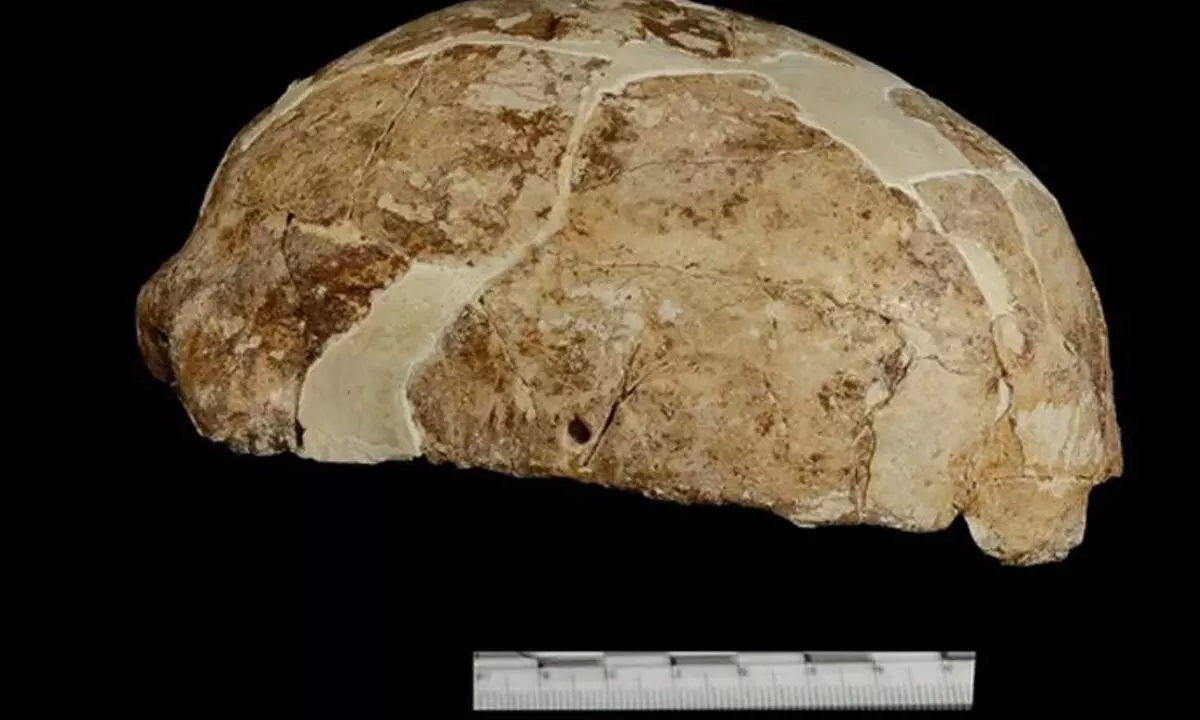Unusual Fossil In South China Discloses An Interesting Connection

Skull fragment unearthed from Red Dear Cave (Xueping Ji)
- An examination of DNA from remains found in a cave in the Chinese province of Yunnan more than ten years ago has finally revealed their secrets
- Numerous late Paleolithic human bones found at Malu Dong (Red Deer Cave), in the southwest of China, in 2008 have baffled researchers
An examination of DNA from remains found in a cave in the Chinese province of Yunnan more than ten years ago has finally revealed their secrets, showing not only who left them but also ultimately where their ancestors will travel.
A 14,000-year-old skull was studied by scientists from the Chinese Academy of Sciences, who found that the lady who once inhabited it, known as Mengzi Ren, was closely related to populations who would later become the first people to set foot in the Americas.
Numerous late Paleolithic human bones found at Malu Dong (Red Deer Cave), in the southwest of China, in 2008 have baffled researchers who have tried to determine who they might have belonged to ever since.
Their age can only be inferred from the surroundings of their interment site because there was insufficient collagen to use as a foundation for a carbon dating investigation. Even the origin of the collection of bones, which includes a piece of a cranium and the top of a femur, is unclear.
What is evident is that whoever left them behind embodied a distinctive blend of traditional and contemporary traits.
They may have been a holdout ancient human species struggling to survive in Asia's south-east, similar to earlier populations of Homo floresiensis. Or maybe they were a hybrid population made up of both far older and more contemporary humans.
It's also possible that despite thousands of years of evolution, some qualities from their ancestors have merely persisted in their genes.
The researchers sequenced the DNA they could recover and mapped it using a common genetic reference model to determine precisely where Mengzi Ren fit into our extensive family tree.
They were able to identify her matriarchal lineage as a now-extinct branch of human ancestry that is only still represented by two contemporary subpopulations since mitochondrial DNA is only handed down through the egg from a mother.
Megzi Ren's close ties to anatomically contemporary humans were confirmed by a detailed examination of her nuclear DNA, almost excluding the possibility that she descended from a more ancient stock.
Mengzi Ren has less in common with people who currently live throughout Southeast Asia than she does with people in the southern Chinese populations of today, despite the fact that she is more closely related to southern Chinese populations than northern Chinese populations. This suggests that the region already had well-organized, diversified populations thousands of years ago.
That does not imply that Asia was settled from below. There is compelling evidence that a relatively small population of people also migrated from the north to colonise the east; this population then divided and migrated through the ice-covered Bering Strait to colonise the huge American continent.
Meanwhile, if everything goes as planned, Mingzi Ren won't be the only person to have her genes analysed. Numerous additional Late Pleistocene locations in Asia as well as Red Deer Cave have more mysteries to be revealed.
Next Story














